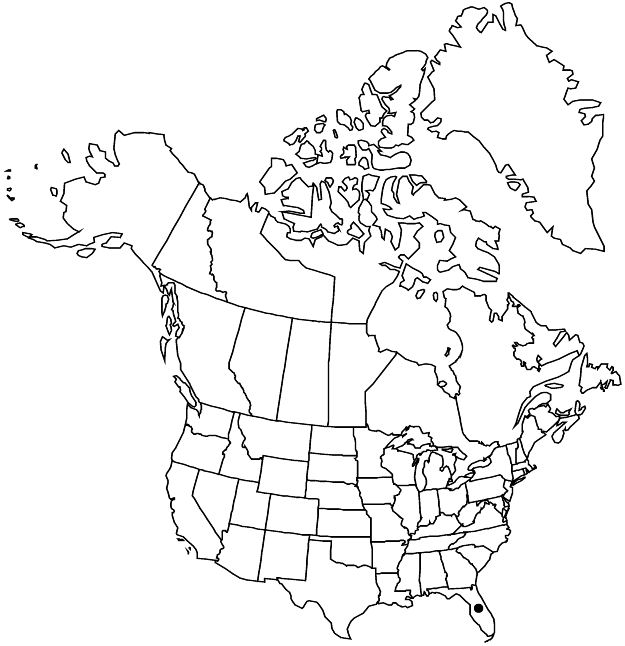Nyssa ursina
Torreya 27: 92. 1927.
Shrubs or trees, 2–5 m, crown typically intricately branched; bark irregularly fissured; twigs usually glabrous, rarely puberulent. Leaves: petiole (4–)5–9 mm; blade narrowly elliptic to oblanceolate, rarely to ovate, 3–7 × 1–2 cm, coriaceous, base cuneate to rounded, margins entire, apex obtuse, abaxial surface glabrous or puberulent (primarily along veins), adaxial surface glabrous. Inflorescences: peduncle 3.2–5.5 cm, sparsely hairy or glabrous; staminate (1–)2–5-flowered, pistillate and bisexual 1–2-flowered. Staminate pedicels present. Flowers: ovary glabrous. Drupes usually black, rarely blue, glaucous, globose, 7–11 mm, smooth; stone 6–8 mm, with several low, rounded longitudinal ridges.
Phenology: Flowering spring.
Habitat: Open savannas, depressions in flatwoods.
Elevation: 0–70 m.
Discussion
Nyssa ursina is limited to six counties in the panhandle region of Florida. It occurs together with N. biflora throughout its limited range, which supports recognizing it as a distinct species.
Selected References
None.
